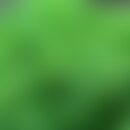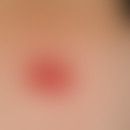Synonym(s)
DefinitionThis section has been translated automatically.
Levistici radix, also known as lovage root, is a drugmonographed by Commission E that is used in herbal medicinal products as a preventive measure against kidney gravel and in flushing therapy for the treatment of inflammatory diseases of the urinary tract.
Lovage has a long history: thousands of years of traditional medicinal use to treat a wide range of ailments (Colombo et al. 2011; De Voss 2010). The traditional use of Levisticum officinale for various ailments is well documented in several manuals and folklore. Its use is already mentioned in antiquity by Dioscorides as Greek: ligusticon, Latin: ligusticum, the plant was cultivated in the Alpine region of Liguria in Italy (Dioscorides).
Lovage preparations were used in the Middle Ages primarily as an emmenagogue, carminative diuretic and as a remedy for various skin diseases and were mentioned by Lonicerus (1564) and Matthiolus (1501-1577) after Madaus.
The medieval source book: the Capitulary de Villis (9th century) contains lovage as one of many edible and medicinal plants that should be cultivated in every imperial garden. It has been known for centuries as a carminative and antispasmodic folk remedy. In the cosmetic-medical treatise by Trotula de Ruggiero of the Schola Medica Salernitana from the 11th century, lovage is mentioned for skin whitening. In Germany, it was approved for inflammatory conditions of the urinary tract and kidney stones. In France, lovage was used as a digestive and carminative and as an ingredient in confectionery. The therapeutic effect of lovage is described by Madaus (1938) and in many other sources (Madaus 1938).
Quality is defined in the European Pharmacopoeia (Ph. Eur.).
HMPC monograph: Traditional-use: Increases urine volume, promotes flushing of the urinary tract in mild urinary tract complaints, use for no longer than 2-4 weeks
ESCOP: Not processed.
Commission E. monograph: Flushing in inflammatory diseases of the urinary tract and for the prevention and treatment of renal gravel.
Empirical medicine: Dyspeptic complaints, digestive support; menstration complaints.
IngredientsThis section has been translated automatically.
Levistici radix contains 0.4 to 1.7 % essential oil with the main ingredients ligustilide (24 to 62 %), 3-butylphthalide and alpha-terpinyl acetate as characteristic spice components.
In addition, coumarin viates and the photosensitizing furanocoumarins (bergapten, psoralen), phenolic carboxylic acids, chemo- and thermolabile polyacetylene (+)-falcarindiol and vitamin C.
You might also be interested in
EffectsThis section has been translated automatically.
Levistici radix shows spasmolytic, diuretic and carminative effects.
Field of application/useThis section has been translated automatically.
Lovage root is used as a preventive against kidney gravel and in flushing therapy for the treatment of inflammatory diseases of the draining urinary tract(HMPC monograph).
DosageThis section has been translated automatically.
The daily dose is between 4 and 8 g, depending on the preparation.
Undesirable effectsThis section has been translated automatically.
No adverse effects are known. Due to the photosensitive properties of furanocoumarins, intensive UV radiation and intensive sunbathing should be avoided during therapy. Contact allergies are rare.
ContraindicationThis section has been translated automatically.
In acute inflammatory diseases of the renal parenchyma; cardiac or nephrogenic edema.
Pregnancy and lactation, and adolescents under 18 years: no sufficient experience.
Allergy to one of the ingredients
InteractionsThis section has been translated automatically.
There are no known interactions with other drugs.
Trade namesThis section has been translated automatically.
commercially available is a fixed combination of lovage root+rosemary leaves+dew herb.
- Levistici radix (lovage root)
- Rosmarini folium (rosemary leaves)
- Centaurii herba (Centaury) = Canephron ®NCoated tablets (Adults: 2-2-2(Children: 1-1-1)
Note(s)This section has been translated automatically.
During a flushing therapy, care should be taken to ensure a sufficient fluid intake of at least 2 l/day.
LiteratureThis section has been translated automatically.
- Ashwood-Smith MJ et al (1992) Photosensitivity from harvesting lovage (Levisticum officinale). Contact Dermatitis 26:356-357.
- Gijbels MJ et al (1982) Phthalides in the essential oil from roots of Levisticum officinale. Planta Med 44:207-211.
- Lapeere H et al. (2013) Contact dermatitis caused by lovage (Levisticum officinalis) essential oil. Contact Dermatitis 69:181-182.
- Madaus G (1938) Levisticum officinale textbook of biological remedies. Georg Thieme Publishers pp 1746-1749.
- Schilcher H (2016) in: Leitfaden Phytotherapie, Urban & Fischer Verlag Munich, p 205.
- Schinkovitz A et al. (2008) Antimycobacterial polyacetylenes from Levisticum officinale. Phytother Res 22:681-684.
- Segebrecht S et al. (1989) Ligustilide: Guiding Component for Preparations of Levisticum officinale Roots. Planta Med 55:572-573.
- Sertel S et al. (2011) Chemical composition and antiproliferative activity of essential oil from the leaves of a medicinal herb, Levisticum officinale, against UMSCC1 head and neck squamous carcinoma cells. Anticancer Res 31:185-191.
- https://arzneipflanzenlexikon.info/liebstoeckel.php.
- https://www.ema.europa.eu/en/documents/herbal-monograph/final-community-herbal-monograph-levisticum-officinale-koch-radix_en.pdf
- Wenigmann M. (2017) Phytotherapy medicinal drugs, phytopharmaceuticals, application. Urban & Fischer, pp. 147-148







